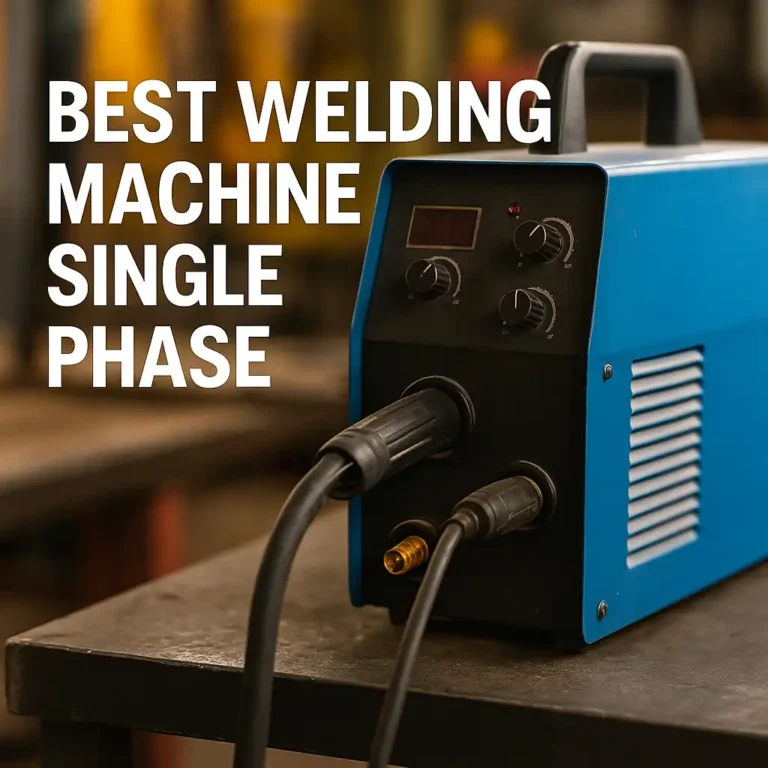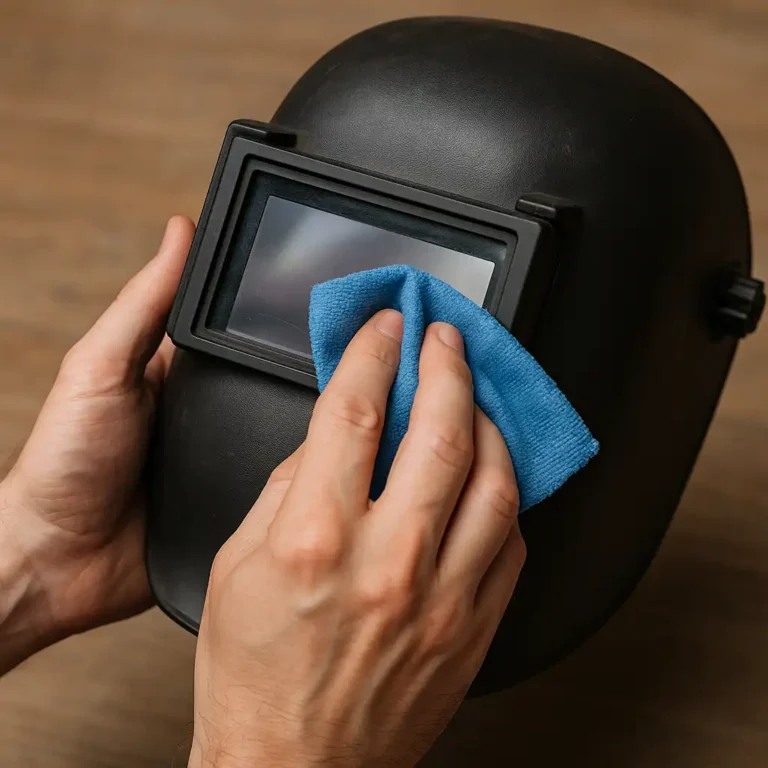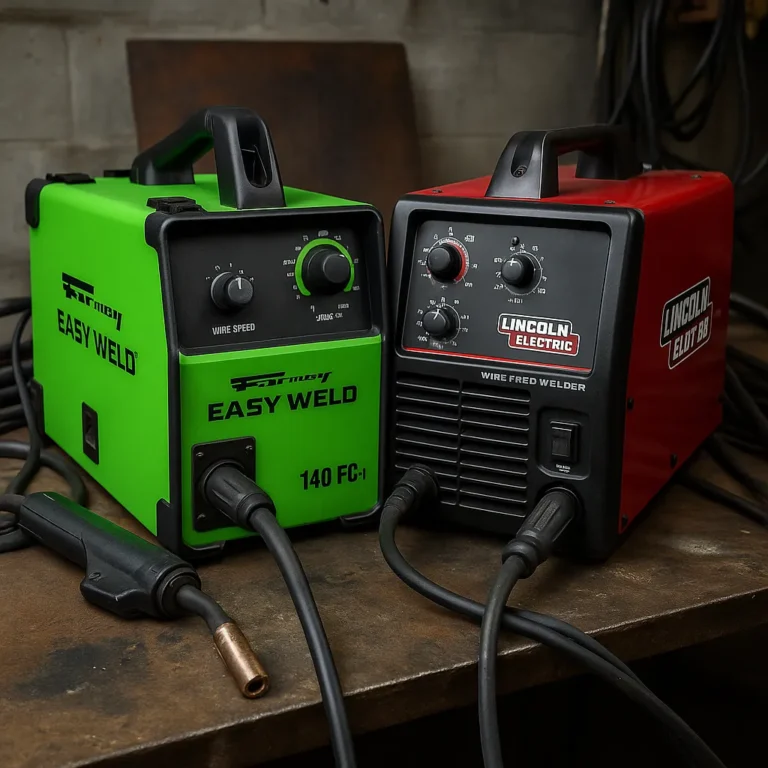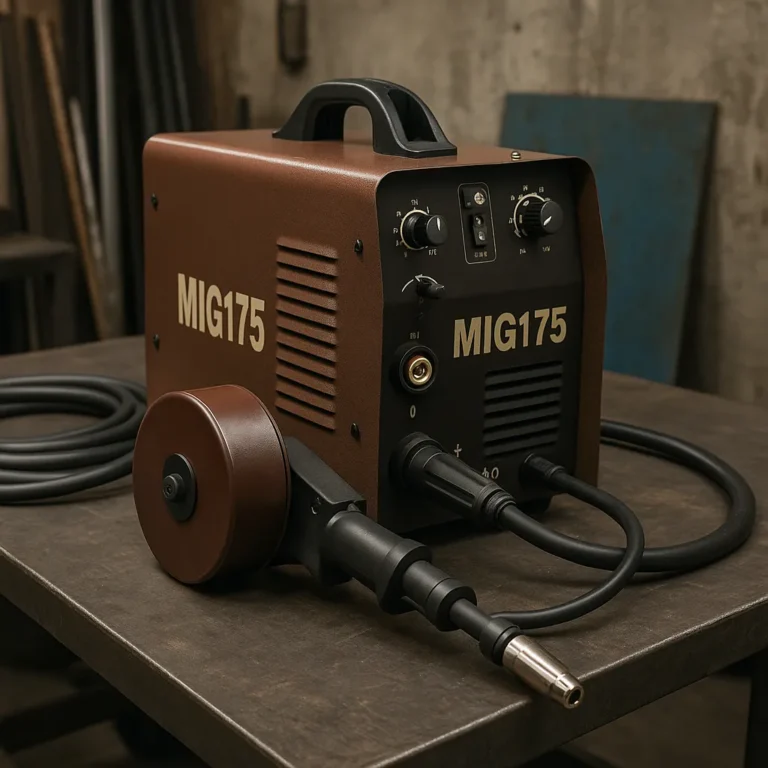Lincoln 140 vs Hobart 140: Battle of the Budget MIG Welders

Disclosure: This post contains affiliate links. As an Amazon Associate, I earn from qualifying purchases—at no extra cost to you.
If you’re just getting into MIG welding or looking for a reliable light-duty welder for your garage, you’ve probably come across two fan favorites: the Lincoln Electric 140 and the Hobart Handler 140. These compact workhorses are often compared for their power, portability, and performance—and for good reason. They’re both top-tier machines aimed at DIYers, automotive tinkerers, and light fabrication users. But when it comes to choosing between them, the details matter.
Let’s dig into the specifics so you can spark up the right decision.
Hobart Handler 140 MIG Welder Review
The Hobart Handler 140 is a 115V MIG welder known for being rugged, reliable, and downright user-friendly. Its output range is 25A to 140A, suitable for welding mild steel up to 1/4 inch thick. This welder is designed for plug-and-play operation, meaning you can connect it to any standard household outlet and get to work.
One of its standout features is the five-position voltage control. This allows for a much finer level of control over your weld, reducing spatter and improving arc performance. Whether you’re welding sheet metal or repairing a farm gate, the Handler 140 delivers smooth, consistent beads.
The internal wire drive system is all-metal, a detail that reflects Hobart’s focus on durability. It’s also backed by Hobart’s industry-recognized warranty and customer support, which is a confidence booster for first-time buyers.
Lincoln Easy MIG 140 Review
The Lincoln Electric Easy MIG 140 is no slouch in this comparison. Also operating on 115V, it delivers comparable output from 30A to 140A and is MIG-ready right out of the box. It’s widely loved for its ease of setup and solid performance across thin to medium-gauge metals.
Lincoln’s diamond core technology stands out—it provides a forgiving arc that makes welding more manageable, especially for beginners. You’ll also appreciate its continuously variable wire feed speed control, which offers precision without complication.
The Lincoln’s build quality is excellent, and its cast aluminum drive system is smooth and dependable. Like Hobart, it supports both MIG and flux-core welding, making it a flexible tool for home and light industrial use.
Lincoln 140 vs Hobart 140: Feature Comparison
While both welders operate on 115V and deliver a maximum output of 140A, their handling of that power varies slightly. Hobart provides more structured voltage control with its five-tap settings, while Lincoln offers infinite wire feed adjustments, offering more customization on the fly.
In terms of portability, both weigh around 60 pounds—manageable but not exactly featherweight. Setup is a breeze for both, with clear manuals and straightforward interfaces. If you’re looking for finer arc control and precision, the Hobart might edge out. But if you prefer a smoother arc and more adjustability in real time, Lincoln shines.
When it comes to accessories, Lincoln tends to come with a few more perks right out of the box. Still, Hobart’s durability and voltage tap system give it a leg up for consistent, high-quality welds.
Conclusion
It’s hard to go wrong with either machine. If you favor precision, a durable build, and consistent arc control, the Hobart Handler 140 is your machine. But if you value smoother arc starts, real-time wire control, and a more forgiving learning curve, the Lincoln 140 will feel like a natural fit.
Either way, you’re getting a top-tier 140-amp welder that’ll earn its place in your workshop.






